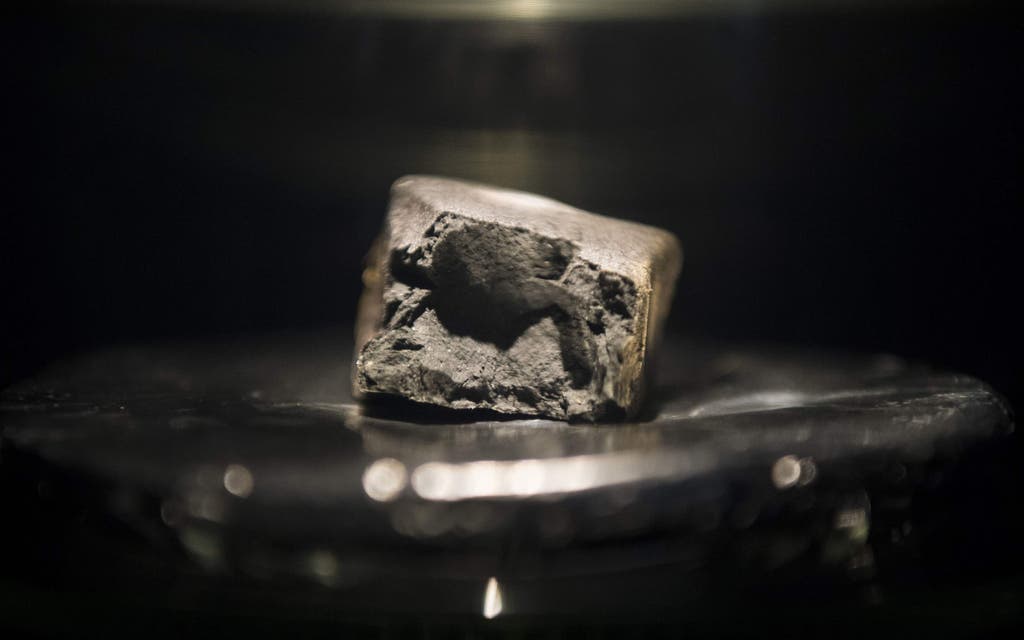Extraordinary space odyssey of Winchcombe Meteorite unveiled
Scientists from across the globe teamed up to study the Winchcombe Meteorite, that hit the Earth three years ago, employing advanced techniques to examine its mineral grains.
In a press statement, Glasgow University, which was leading the research, says that the intensive nano-analysis by the scientists unveiled how water and cosmic impacts reshaped the meteorite during its journey through space before it landed in a sheep field in England.
The statement adds that researchers have found evidence of water’s transformative power, shaping the meteorite from a dry rock to a ball of mud, repeatedly broken apart and reassembled over eons. Their work was conducted on a scale more reserved for investigating samples returned to Earth by a multibillion-dollar space mission
The Winchcombe Meteorite, belonging to a rare class called CM carbonaceous chondrites, holds within it the secrets of the solar system’s infancy, says the University.
The statement adds that the Winchcombe meteorite was recovered within hours of hitting the ground. Members of the public, citizen scientists, and the amateur meteorite enthusiast community recognised that rocks had hit the ground and helped scientists to identify the location of samples, aiding their recovery. The speed of its recovery helped prevent it from being further altered by exposure to the Earth’s atmosphere, offering scientists a rare opportunity to learn more about CM chondrites by scrutinising it down to the atomic level.
According to a paper published in the journal Meteoritics and Planetary Science, researchers describe how they explored the complex breccia of the Winchombe meteorite.
A breccia is a rock formed from chunks of other rocks cemented together in a structure called a cataclastic matrix. The team’s analysis carried out using sophisticated techniques including transmission electron microscopy, electron backscatter diffraction, time of flight secondary ion mass spectrometry, and atom probe tomography, showed that the Winchcombe breccia contains eight distinct types of CM chondrite rocks.
The researchers found that each type of rock has been altered to different degrees by the presence of water, not just between the types of rocks but also, surprisingly, within them and many examples of unaltered mineral grains next to completely altered ones, even down to the nanoscale. For comparison, a human hair is around 75,000 nanometres thick.
They suggest that the likely explanation for the jumbled nature of the different types of rocks and their extreme variation in aqueous alteration is that the Winchcombe asteroid was repeatedly smashed into pieces by impacts with other asteroids before being pulled back together.
Another significant finding of the analysis is the unexpectedly high proportion of carbonate minerals like aragonite, calcite, and dolomite, along with minerals that have subsequently replaced carbonates, in the samples the team analysed.
The research adds that Winchcombe meteorite was more carbon-rich than previously thought and likely accumulated abundant frozen CO2 before it melted to form the carbonate minerals and the analysis could help explain the large carbonate veins that have been observed on the surface of the Asteroid Bennu by NASA’s OSIRIS-REx mission.
The study was led by Dr Luke Daly of the University of Glasgow, he is also the lead author of the paper. He led the search party which recovered the largest fragment of the Winchcombe Meteorite after it was spotted as a fireball streaking across the skies over Gloucestershire on February 28, 2021.
“We were fascinated to uncover just how fragmented the breccia was within the Winchcombe sample we analysed. If you imagine the Winchcombe meteorite as a jigsaw, what we saw in the analysis was as if each of the jigsaw pieces themselves had also been cut into smaller pieces, and then jumbled in a bag filled with fragments of seven other jigsaws,” says Daly.
“However, what we’ve uncovered in trying to unjumble the jigsaws through our analyses is new insight into the very fine detail of how the rock was altered by water in space. It also gives us a clearer idea of how it must have been battered by impacts and reformed again and again over the course of its lifetime since it swirled together out of the solar nebula, billions of years ago,” he adds.
“This level of analysis of the Winchcombe meteorite is virtually unprecedented for materials that were not directly returned to Earth from space missions like Moon rocks from the Apollo programme or samples from the Ryugu asteroid collected by the Hayabusa 2 probe,” says Dr. Leon Hicks from the University of Leicester and co-author of the study.
“The speed at which the fragments of Winchcombe were recovered left us with some pristine samples for analysis, from the centimetre scale all the way down to individual atoms within the rocks. Each grain is a tiny time capsule that, taken together, helps us build a remarkably clear view into the formation, re-formation, and alteration that occurred for millions of years,” says Dr Martin Suttle, Paper co-author from the Open University.
“Research like this helps us understand the earliest part of the formation of our Solar System in a way that just isn’t possible without detailed analysis of materials that were right there in space as it happened. The Winchcombe meteorite is a remarkable piece of space history and I’m pleased to have been part of the team that has helped tell this new story,” says Dr Diane Johnson, co-author of the paper,from Cranfield University.
The publication of the paper is part of the Winchcombe science team consortium, organised by the UK Fireball Alliance and conducted by the UK Cosmochemistry Network.
The team’s paper, titled ‘Brecciation at the grain scale within the lithologies of the Winchcombe CM carbonaceous chondrite’, is published in Meteoritics and Planet












